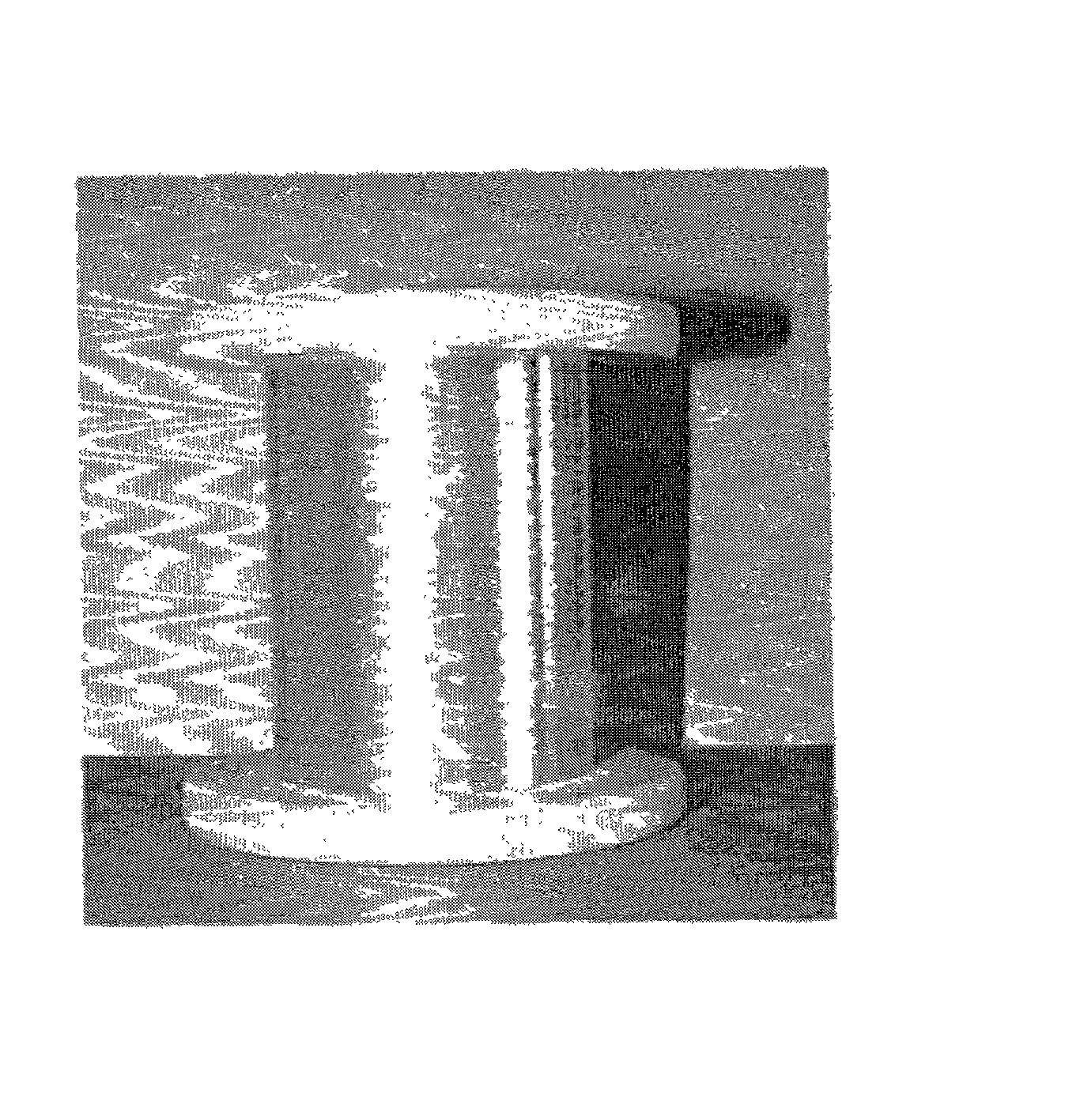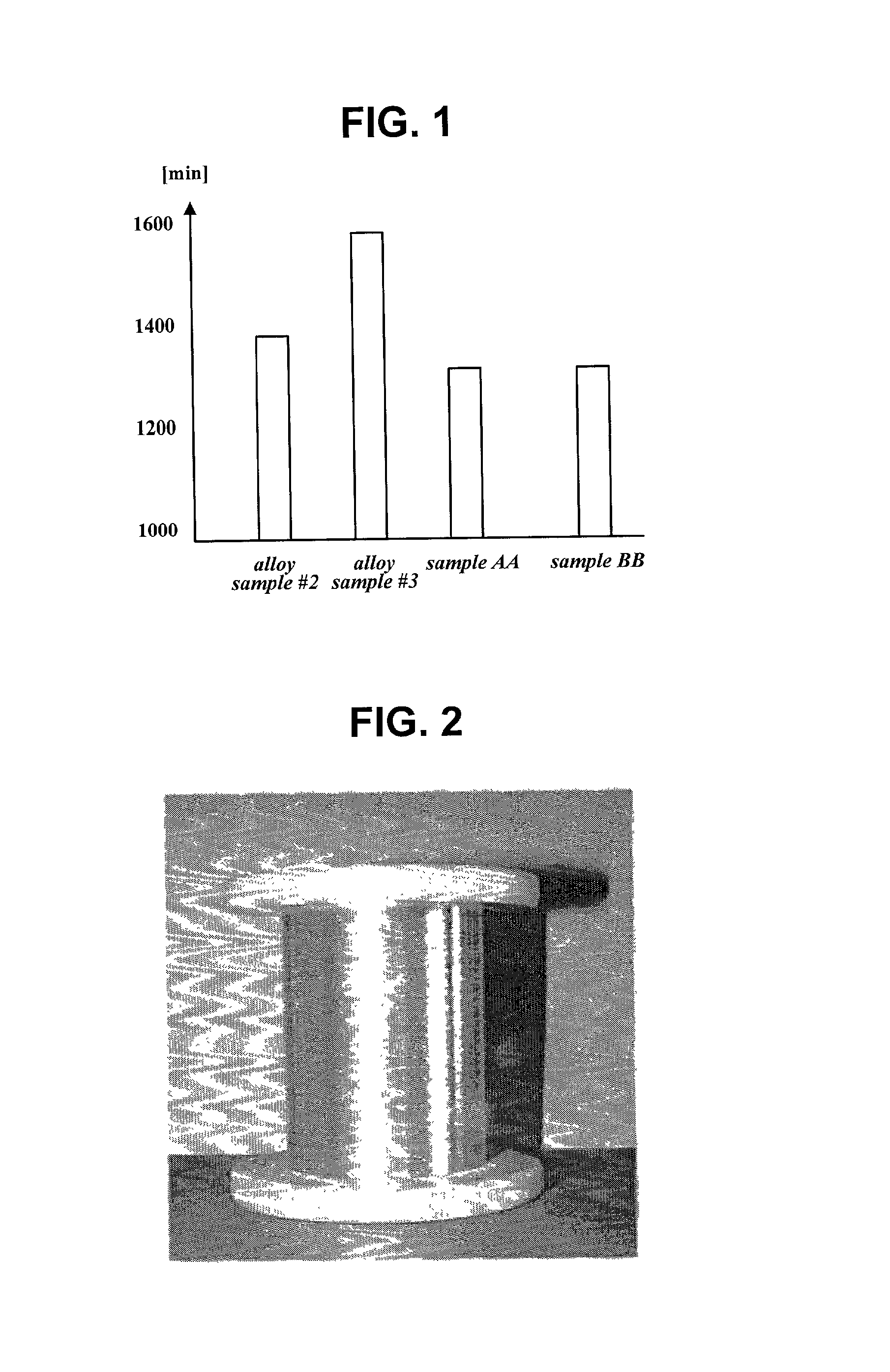Fr-Cr-Al alloys for electric resistance wires
a technology of electric resistance wires and alloys, which is applied in the direction of metal/alloy conductors, conductors, and resistors of iron-filament ballasts, can solve the problems that ni--cr-type nichrome wires cannot be used in industrial fields and have restricted application fields
- Summary
- Abstract
- Description
- Claims
- Application Information
AI Technical Summary
Problems solved by technology
Method used
Image
Examples
Embodiment Construction
[0016] In order that the invention may be fully understood, a preferred embodiment thereof will now be described with reference to the accompanying drawings.
[0017] In this embodiment, Be and misch metal, which has not been considered importantly in alloy designs until now, are used to acquire excellent heat resistance as well as superior hot and cold workability. Each alloying element in this embodiment acts as follows.
[0018] Cr is an element for stabilizing ferrite in a steel. A steel containing Cr more than 12 wt % is classified into ferritic stainless steel. A steel containing Cr less than 12 wt %, classified into austenitic Fe--Cr type steel, has better workability and strength at high temperature than a ferritic steel. However, austenitic Fe--Cr type steel has relatively high coefficient of thermal expansion and heat distortion at high temperature, thus, it is inadequate to be used for the manufacture of electric resistance wires.
[0019] On the contrary, ferritic Fe--Cr alloys h...
PUM
| Property | Measurement | Unit |
|---|---|---|
| wt % | aaaaa | aaaaa |
| elongation | aaaaa | aaaaa |
| elongation | aaaaa | aaaaa |
Abstract
Description
Claims
Application Information
 Login to View More
Login to View More - R&D
- Intellectual Property
- Life Sciences
- Materials
- Tech Scout
- Unparalleled Data Quality
- Higher Quality Content
- 60% Fewer Hallucinations
Browse by: Latest US Patents, China's latest patents, Technical Efficacy Thesaurus, Application Domain, Technology Topic, Popular Technical Reports.
© 2025 PatSnap. All rights reserved.Legal|Privacy policy|Modern Slavery Act Transparency Statement|Sitemap|About US| Contact US: help@patsnap.com


